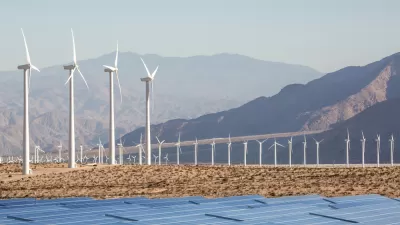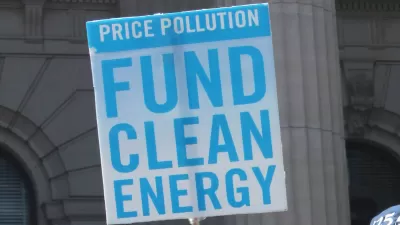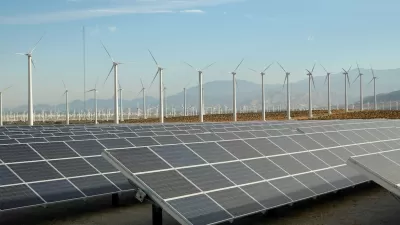Although the United States built less new energy capacity than in the same time period last year, renewable energy dominated the capacity to come online so far in 2014.
According to the Office of Energy Projects at the U.S. Federal Energy Regulatory Commission “a full 92 percent of all new capacity added in the United States so far this year came in the form of renewable energy.” In all, renewables totaled all but 91 megawatts of the country’s 1,150 megawatts of new power capacity.
Stephen J. Smith reports on the success of renewables so far in 2014 for Next City, providing a break down of the new capacity: “Solar took home the crown with half of the new capacity, while wind picked up the majority of the rest, with 37 percent of the added capacity. The only major non-renewable source to add capacity was natural gas, which added a measly 90 megawatts of generation capacity.”
New York and California were the states that added the two largest renewable energy projects, but don’t forget that Texas has been busy this month breaking records for wind power generation.
FULL STORY: 92 Percent of New U.S. Power Plant Capacity This Year Came from Renewables

Alabama: Trump Terminates Settlements for Black Communities Harmed By Raw Sewage
Trump deemed the landmark civil rights agreement “illegal DEI and environmental justice policy.”

Study: Maui’s Plan to Convert Vacation Rentals to Long-Term Housing Could Cause Nearly $1 Billion Economic Loss
The plan would reduce visitor accommodation by 25% resulting in 1,900 jobs lost.

Planetizen Federal Action Tracker
A weekly monitor of how Trump’s orders and actions are impacting planners and planning in America.

Wind Energy on the Rise Despite Federal Policy Reversal
The Trump administration is revoking federal support for renewable energy, but demand for new projects continues unabated.

Passengers Flock to Caltrain After Electrification
The new electric trains are running faster and more reliably, leading to strong ridership growth on the Bay Area rail system.

Texas Churches Rally Behind ‘Yes in God’s Back Yard’ Legislation
Religious leaders want the state to reduce zoning regulations to streamline leasing church-owned land to housing developers.
Urban Design for Planners 1: Software Tools
This six-course series explores essential urban design concepts using open source software and equips planners with the tools they need to participate fully in the urban design process.
Planning for Universal Design
Learn the tools for implementing Universal Design in planning regulations.
Caltrans
Smith Gee Studio
Institute for Housing and Urban Development Studies (IHS)
City of Grandview
Harvard GSD Executive Education
Toledo-Lucas County Plan Commissions
Salt Lake City
NYU Wagner Graduate School of Public Service





























